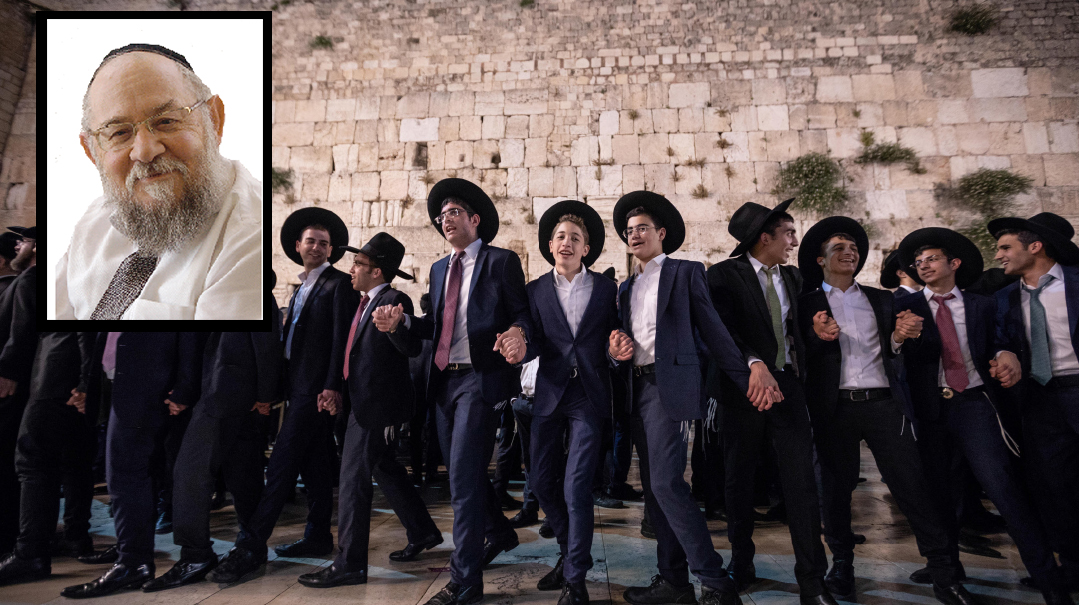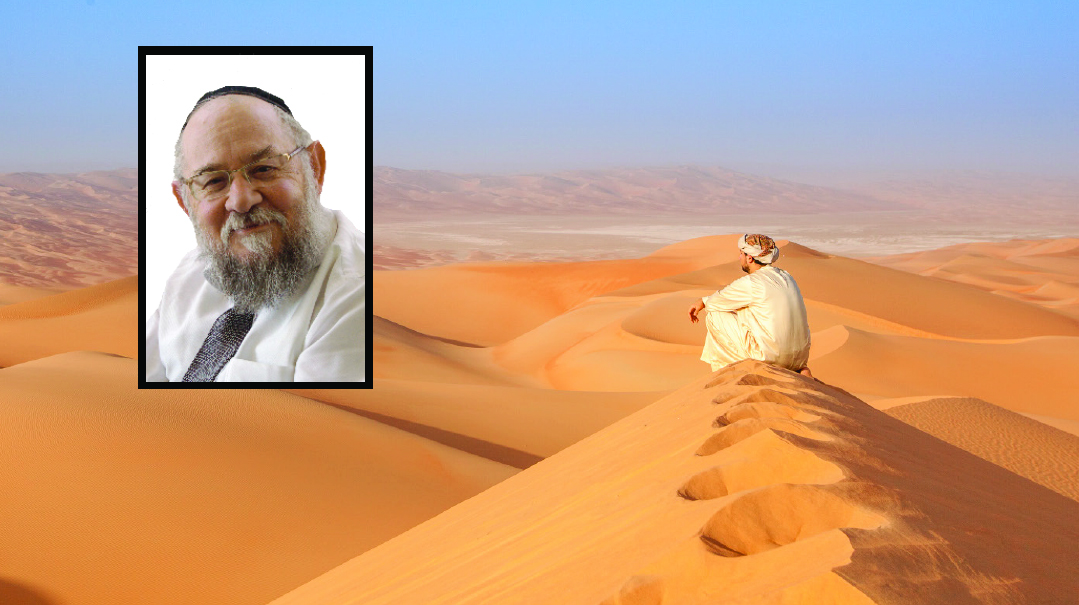Fallen Idols


H ow could it be that an integral item in the Mishkan’s accessories were the golden keruvim atop the Ark in seeming blatant contravention to the very commandment etched on the Tablets inside against making any sort of graven image?
The two keruvim atop the Ark of Testimony — their faces like children — presented a stark philosophical challenge for the Generation of the Wilderness. The keruvim stood atop the kapores — the covering of the Ark in which the Luchos lay — all far away from the public eye concealed in the Holy of Holies behind the paroches.
But those two keruvim were a source of confusion for the pesukim specifically instruct: “And you shall make two keruvim of gold… on the two ends of the kapores. And make one keruv from one end and the other keruv from the other end” (Shemos 37:8). But at Har Sinai directly from the Mouth of G-d the entire nation heard words that seemed to flatly contradict this commandment: “Do not make for yourself a graven image or any likeness of anything in the heavens above or the earth below.”
Obviously a fundamental contradiction and a thinker’s challenge. One of the sternest warnings the Jewish People heard at Sinai was the admonition against any attempt to depict G-das a tangible image. Am Yisrael was forbidden to make any physical representation of Divinity in the manner of the idolatrous nations. And this warning is repeated many times in the Torah as in the following pasuk: “You shall not make along with Me gods of silver or gods of gold you shall not make for yourselves” (Shemos 20:20).
It was very clear to the people that they must relate to Hashem only in a purely spiritual manner. There was no place for visual aids of any kind.
And now all of a sudden they are commanded to form an image of gold over the Ark of Testimony that held the Luchos HaBris. Angels “with their wings spread upward sheltering the kapores with their wings with their faces toward one another; [turned] toward the kapores shall be the faces of the keruvim.”
How could their minds even conceive of such a thing? How could their hearts and spirit contain such a blatant contradiction — and consent to it?
But after prolonged contemplation of this dilemma the message of the keruvim emerges and in fact one sees that there is no contradiction. On a deeper level the keruvim actually promote the fight against idolatry bringing a new interpretation to the very concept.
From the keruvim we learn that idolatry is not just the formation of icons or statues of gold copper or wood and the worshipping of those icons. Nor is it limited to bowing down to the stars to a majestic mountain or even to a tree. These things are merely the outward expressions of idolatry. More comprehensively idolatry is defined as any idea that subjugates the human spirit and detaches a person’s thinking from its anchor in Divine morality from the true measure of right and wrong revealed in the Word of G-d.
The German-Jewish pre-World War II philosopher Franz Rosenzweig once wrote “The names change but the diversity remains. Culture and civilization people and state nation and race arts and science ethics and religiosity — this comprises although certainly not entirely an overview of the pantheon of today. And who will deny the reality of these powers? But never has a ‘pagan’ served his gods more faithfully and been more ready to sacrifice to them than we humans of today.”
Not only did a contemporary philosopher discern this fact of modern life but so did a medieval commentator on the Torah. The words of Rav Yitzchak Abravanel are still perfectly applicable to our 21st-century lives:
“And this great idolatry — namely the focusing of all thought and activities on the accumulation of profit and success in business — are the mighty gods on which people rely and in whose holy names they believe and trust while denying G-d Above and abandoning His Torah leaving it forsaken and snubbed in the corner. This is the substance and principle of avodah zarah.”
In fact making any means — even the most fitting and proper means — into an end turning it into the purpose of our lives is a transgression of the sin “You shall have no other gods before Me.” And this isn’t relegated to the material world. Even non-material ideals that are dear to us that we rightly sacrifice for — such as our homeland our nation and our country — if they cease to be means and tools for serving the Creator but take on intrinsic value on their own then they too transform from noble values to avodah zarah.
Indeed one who follows the trail of changing values as it moves through history will discern that those values began to vary once people removed an objective moral standard from them. For example democracy became the supreme value in whose name all restraints were removed from the tongue and the pen. The idea of “the public’s right to know” tramples and humiliates thousands of people when in the name of this right reporters set their consciences aside to invade private lives.
The mystical secrets of the keruvim notwithstanding these golden images taught a more basic lesson as well: that even the prohibition of making a graven image does not stand on its own that if it is not intrinsically connected to the One Who gives all commands to the Supreme source of all morality then it too can become an idol. Contemplating the keruvim that stood in the Kodesh Kodoshim a Jew came to the realization that in the reality of our lives there is only the Word of Hashem the dictate of pure morality to which every ideal and value are subject and from which they draw their inspiration. At His Will He forbids graven images and likenesses and at His Will He permits golden keruvim. And from them man learns the proper ranking of all the values he believes in.
A Jew will not be fooled into thinking that the keruvim are chalilah a substitute for Divinity or a depiction of it. For first of all he will notice that the keruvim are not one but two — in other words they are not absolute but relative while the G-d of Israel is One and there is none beside Him.
Furthermore the keruvim had “wings spread upward ” thus expressing their dependency on something above them on the flow of spiritual sustenance from On High. Such an image is the opposite of that which would bring a person to idolatry.
In the heart of one who contemplated them the keruvim also renewed the fundamental concepts of Judaism. There were two to teach us that a person cannot live in society only for himself. He needs to be deeply aware that he is part of society and that he is always completed by others. Only together can the people give shelter to the kapores and the Ark of Testimony that contains the Torah the Law of the People. Only that unity can create the ideal society.
And that function will take place only if we remember that “their faces are toward one another ” even though one is “at one end” and the other is “at the other end ” that is when their views are opposed. Because as different as two people are each stands on the same kapores on the same basic ground.
And most importantly “toward the kapores shall be the faces of the keruvim.” The keruvim as they gaze at each other remember that they draw the inspiration from their lives by looking toward the kapores knowing what is there beneath the kapores inside the Ark — the Luchos HaBris. And only by fulfilling the commandments etched on those Tablets in his daily life does a person gain freedom from the many false gods that surround him.
Oops! We could not locate your form.




